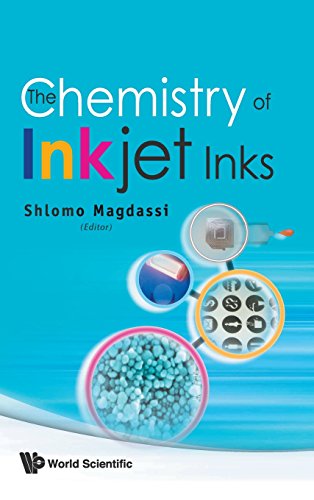- Início
- Object-Oriented Design Heuristics ebook
- Distillation Design Kister book
- Effective STL: 50 Specific Ways to Improve Your
- Contracts in Islamic Law download
- The Contracts of the Fall pdf free
- Ovid on Cosmetics: Medicamina Faciei Femineae and
- Exam Ref 70-697 Configuring Windows Devices pdf
- The Official Red Book, A Guide Book of United
- Introduction to Control Engineering Modeling,
- Grace, Not Perfection: Embracing Simplicity,
- Girl Online: Going Solo: The Third Novel by
- Failure Mode and Effect Analysis: FMEA from
- Practical Laravel 5 pdf
- The Untamed Earl pdf free
- Arcadia pdf
- Principles of Colloid and Surface Chemistry book
- The Chemistry of Inkjet Inks pdf
- Systems Architecture (6th Edition) pdf download
- Doom of the Dragon book
- Cities of the World: Regional Patterns and Urban
- Correr para pensar y sentir ebook download
- Peanuts Vol. 7 book download
- Thug Kitchen 101: Fast as F*ck book download
- Oracle Databases on Amazon Web Services: A
- Back in the Brazilian's Bed epub
- Digital Marketing Strategy: An Integrated
- Spitfire II/V vs Bf 109F: Channel Front 1940-42
- Bearing Design in Machinery: Engineering
- Windows Graphics Programming: Win32 GDI and
- IEEE Std 399-1997, IEEE Recommended Practice for
- Advanced Compiler Design and Implementation book
- Statistical Mechanics of Phase Transitions pdf
- Stochastic Calculus and Financial Applications
- Constructions of Deviance: Social Power, Context,
- Python GUI Programming Cookbook download
- Logo Decode: From Logo Design to Branding pdf
- Marathon Running: Physiology, Psychology,
- Clean Eating Alice: The Body Bible ebook download
- Disappearance at Devil's Rock: A Novel download
- Tom Clancy's The Division: New York Collapse pdf
- Disappearance at Devil's Rock: A Novel ebook
- Playing 1.e4: Caro-Kann, 1...e5 & Minor Lines
- Batteries in a portable world pdf download
- Bela Bartok: An Analysis of His Music epub
- Practical Neural Network Recipies in C++ pdf free
- Always and Forever, Lara Jean epub
- Management Across Cultures: Developing Global
- Microservices in Go: Use Go to Build Scalable
- Green's Operative Hand Surgery, 6th Edition book
- An Introduction to Support Vector Machines and
- Mfc Programming With Visual C++ 6 Unleashed
- CFT Made Simple pdf free
- Hadoop 2 Quick-Start Guide: Learn the Essentials
- The Story of Hong Gildong pdf free
- Microservices in Go: Use Go to Build Scalable
- Law: A Very Short Introduction pdf download
- The Naked Trader download
- The Finite Element Method Using MATLAB, ebook
- Python 3 Das umfassende Handbuch book download
- Types and Programming Languages book download
- Concurrency: State Models & Java Programs epub
- Seeking Wisdom: From Darwin to Munger, 3rd
- Internet of Things with Arduino Blueprints epub
- City of Shadows: King of the Grey, Frostwing,
- Mommy Goose: Rhymes from the Mountains download
- Schaum's Outline of Mathematics for Physics
- Bearing Design in Machinery: Engineering
- Practical Model-Based Testing: A Tools Approach
- Berichte zur Lebensmittelsicherheit 2014:
- 3 Things Successful People Do: The Road Map That
- Big Data: Storage, Sharing, and Security pdf
- Thomas and Fire Engine Flynn Book and CD (Thomas
- Roses and Rot pdf
- From #BlackLivesMatter to Black Liberation ebook
- Contatos
Total de visitas: 6102
The Chemistry of Inkjet Inks by Magdassi S.


The Chemistry of Inkjet Inks epub
The Chemistry of Inkjet Inks Magdassi S. ebook
Publisher: WS
Format: pdf
ISBN: 9812818219, 9789812818218
Page: 339
Human eye inspires clog-free ink jet printer invention. Inkjet Photographic Paper Coating- Suppliers of photographic papers differ in quality based on the chemical coating that is used to accommodate the ink. €�Inkjet printing for the solar cell industry is familiar as a method for printing computer data onto white paper and transparent films,” says Dr. Graphene is closely related to graphite Ink-jet printing is an established and inexpensive industrial process that can apply a range of liquified materials on a variety of substrates over a wide area, and adapted for electronics in making transistor circuits and solar cells. It turns out that common cartridges have an overly high-resolution for this to work well. €�Similar to devices used for home desktop publishing, the inkjet-printer actuates well-dispersed nanoparticles … of desired materials in the form of drops of ink from the print head to create [a light-absorbing] film.”. Inkjet printing assisted cooperative-assembly (IJP-A) synthesis uses stabilized “inks”, a specially modified color management system, and multidimensional group testing rapidly to identify optimal catalysts. Clogged printer nozzles waste time and money while reducing print quality. The chemical company Merck in Darmstadt, Germany will license ink-jet ink technology from electronics manufacturer Seiko Epson in Tokyo for the manufacture of organic light-emitting diode (OLED) television displays. A paper describing the research, 'Inkjet Printing of High Conductivity, Flexible Graphene Patterns,' has been published in Journal of Physical Chemistry Letters. Seung-Yeol Han, an MBI researcher who earned his PhD in Chemical Engineering at OSU with Dr. The team led by engineering professor Mark Hersam published its findings online in a recent issue of the Journal of Physical Chemistry Letters (paid subscription required). The study was performed in collaboration with Professor Jon Wilker in the Department of Chemistry at Purdue University. For us, it's the close look at modern inkjet print heads that was the most interesting. A team from Zhejiang University (China) and the University of California, Santa Barbara have developed an inkjet printing assisted cooperative-assembly technique for ultrafast explorations in combinatorial chemistry.
Fasting for Breakthrough and Deliverance pdf

